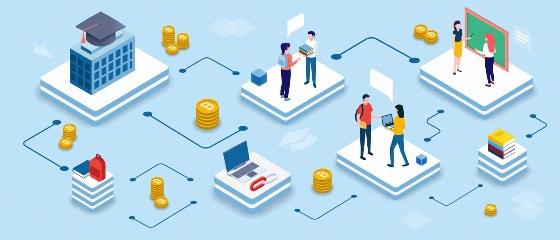How Implementing Blockchain in Educational Institutions Revolutionizes Learning and Records
In today’s rapidly evolving digital landscape, educational institutions are seeking innovative ways to foster secure, obvious, and efficient learning environments. Blockchain, once synonymous with cryptocurrencies, is emerging as a groundbreaking technology in the education sector. Its integration is not only transforming the way academic records are maintained but also redefining learning experiences. In this article, we’ll delve into how implementing blockchain in educational institutions revolutionizes learning and records, examine its far-reaching benefits, and offer insights into real-world implementation.
What is Blockchain Technology?
Blockchain is a decentralized, distributed ledger technology that securely records transactions across multiple computers. Each block contains a cryptographic hash of the previous block, a timestamp, and transaction data, making the entire system resistant to data modification or unauthorized access. In the context of educational institutions,blockchain can be used to safeguard academic credentials,learning pathways,and administrative records.
Why Implement blockchain in education?
- Enhanced Security: Tamper-proof records reduce fraud and unauthorized alterations to student transcripts or certificates.
- Transparency: All parties, including students, educators, and employers, can verify academic achievements quickly and easily.
- Efficient Data Management: decentralized verification streamlines admissions, credit transfers, and alumni record requests.
- Student Empowerment: Learners gain lifelong ownership and control over their educational records.
- Global Recognition: Blockchain-based credentials are easily recognized by institutions and employers worldwide.
Key Benefits of Blockchain Implementation in Education
1. Secure Academic Record-Keeping
One of the foremost benefits of blockchain in educational institutions is the secure management of academic credentials. Traditional records are vulnerable to loss,fraud,and administrative errors,whereas blockchain ensures that all academic records are immutable and verifiable.
- Universities can issue digital diplomas and transcripts that are impossible to forge.
- Graduates can share their credentials with employers globally without delays or reliance on third-party verification.
2. Seamless Credit transfer and Recognition
with blockchain, the process of transferring credits between different educational institutions or programs becomes seamless. Each student’s learning journey is recorded on a decentralized ledger, providing instant access to verified data.
- No more waiting for transcripts to be mailed or manually verified.
- Boosts student mobility and cooperation between universities globally.
3. Personalized & Lifelong Learning Pathways
Blockchain enables micro-credentialing and badging for specific skills, workshops, or courses, allowing students to curate customized, lifelong learning portfolios that reflect holistic educational achievement.
- Encourages continued education and skill development.
- Empowers students to adapt swiftly to evolving workforce needs.
4. Data Privacy and Student Empowerment
Blockchain puts students in control of their academic data, ensuring they grant access for verification only as needed. This enhances data privacy and fosters trust in the system.
How blockchain Revolutionizes Learning Experiences
Blockchain isn’t limited to record-keeping — it has the potential to transform learning itself. Here are a few ways:
- Smart Contracts for Assignments: Educators can use smart contracts to release assignments, grade work, and distribute certificates automatically when predetermined conditions are met.
- Peer-to-Peer Learning Platforms: Blockchain enables decentralized platforms for collaborative projects, resource sharing, and global mentorship.
- Transparent Assessment: The process for grading and evaluation becomes more transparent, reducing grading disputes and promoting fairness.
Real-World Case Studies
MIT: Blockchain-Based Digital Diplomas
The Massachusetts Institute of Technology (MIT) pioneered the use of blockchain for issuing digital diplomas. Graduates receive tamper-proof digital credentials, which they can share with employers or other institutions, streamlining verification and reducing reliance on paper documents.
University of Nicosia: Blockchain for Academic Credentials
The University of Nicosia in Cyprus was the first to issue academic certificates on the Bitcoin blockchain, ensuring authenticity and global accessibility for its students.
sony Global Education: Digital Learning Records
Sony Global Education has developed a blockchain-based platform that enables secure sharing of individual academic and proficiency records, fostering continuous learning and professional growth.
First-Hand Experiences: Blockchain in education
“After implementing blockchain for diploma issuance, verification requests from employers dropped from weeks to instant responses. Our alumni have greater confidence in the integrity of their credentials.”
— Registrar, Leading European University
“Using blockchain-powered badges for student achievements has created a new culture of skill-based recognition, encouraging active participation and lifelong learning.”
— Director, EdTech Nonprofit
Practical Tips for Educational Institutions
- Start with Pilot Projects: Begin your journey by digitizing credentials or automating transcript verification processes.
- Partner with Technology Experts: Collaborate with established blockchain technology providers to ensure robust,scalable integration.
- Build Awareness & Train Staff: Offer workshops to familiarize faculty and administrative staff with blockchain’s core concepts and workflows.
- Focus on Data Privacy: Ensure compliance with data protection regulations such as GDPR by allowing students to control access to their records.
- Engage Students: Involve students in blockchain initiatives to foster transparency, trust, and adoption.
potential Challenges in Blockchain Adoption
While blockchain offers remarkable benefits, educational institutions may face certain hurdles:
- Initial Implementation Costs: Setting up blockchain infrastructure can require important investment.
- Lack of Awareness: Faculty, staff, and students may need training and time to adapt to new systems.
- Interoperability: Seamless integration with existing management systems can be complex.
- Regulation and Standards: Ensuring compliance with educational and data protection standards is crucial.
Overcoming these challenges requires strategic planning, strong leadership, and continuous stakeholder engagement.
Conclusion: The Future of blockchain in Education
The adoption of blockchain in educational institutions signals a pivotal shift towards secure, transparent, and student-centric learning ecosystems. From revolutionizing academic record-keeping to enabling adaptive learning journeys and global recognition, blockchain is poised to set new standards in education.
As more universities and schools embrace this technology, they’re not just improving operational efficiency — they’re cultivating environments where learners are empowered and innovation thrives. Now is the time for educators, administrators, and policymakers to consider blockchain as a cornerstone for the future of learning and academic records.

